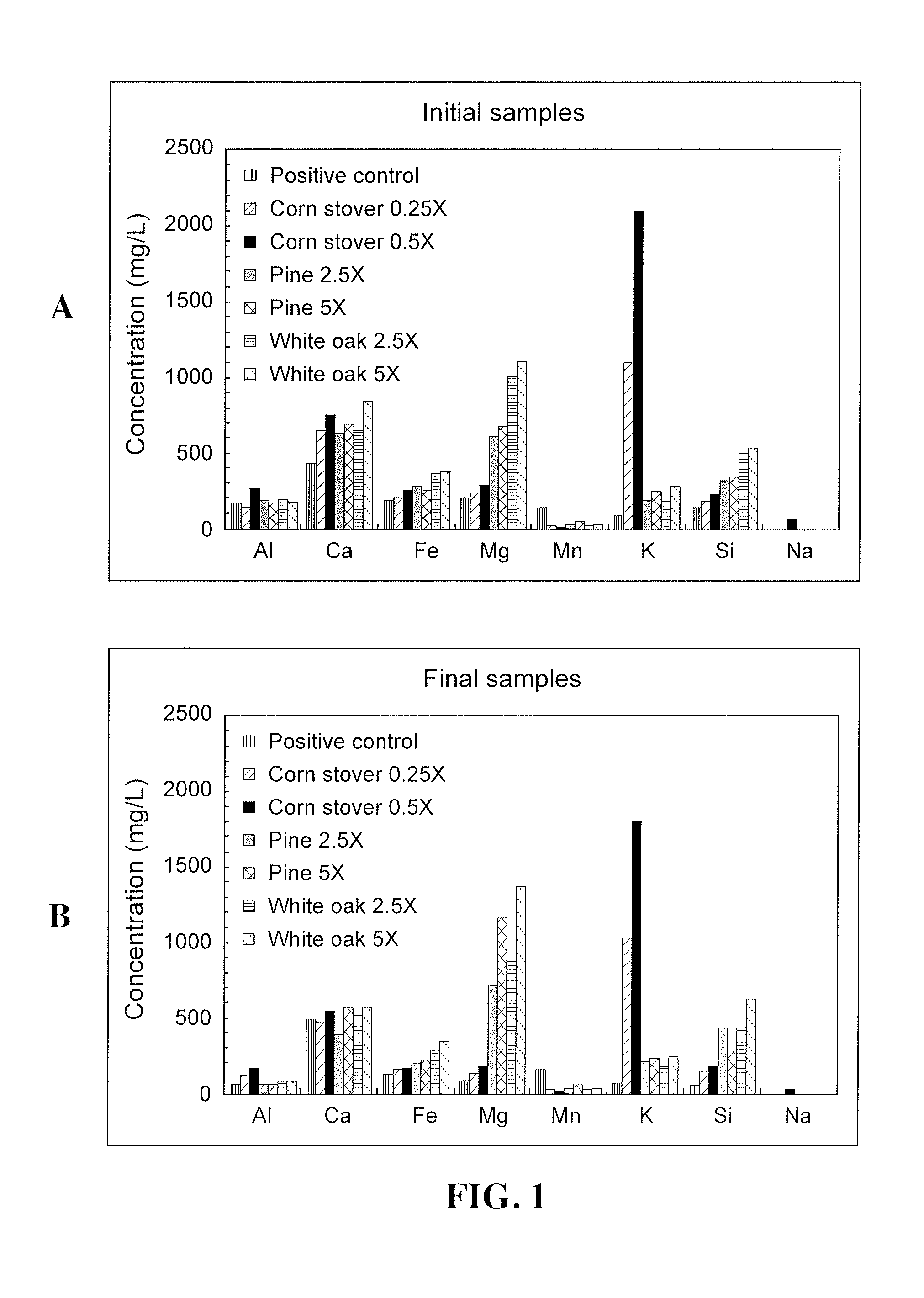Method for generating methane from a carbonaceous feedstock
a carbonaceous feedstock and biological technology, applied in the direction of gaseous fuels, waste based fuels, separation processes, etc., can solve the problem of small carbon footprint, achieve high greenhouse gas production capacity, high quality of methane, and reduce the effect of greenhouse gas conten
- Summary
- Abstract
- Description
- Claims
- Application Information
AI Technical Summary
Benefits of technology
Problems solved by technology
Method used
Image
Examples
example 1
[0069]Four corn stover biochar concentrations were tested to evaluate the effects of biochar on methane production from anaerobic digestion, along with a positive control with no additive, as shown in Table 3. Each digestion was conducted in triplicate. The selected amounts of biochar used in these experiments, shown in Table 3, represent about 0.25 to about 0.5 times the amount of biochar that theoretically would be required to sequester the entire amount of CO2 produced during the anaerobic digestion (0.029 mole) if all sequestration resulted from reaction with divalent cations (Ca and Mg), e.g., as in U.S. Pat. No. 8,247,009. The amount of CO2 produced for 550-mL anaerobic digestion (0.029 mole) was calculated based on preliminary results, while the concentration of divalent cations (Ca=8.3 mg / g, Mg=9.2 mg / g) in biochar were determined by using the ASTM Methods referred to above.
TABLE 3Experimental conditions for batch-mode anaerobic digestion.InoculumSubstrateBiocharConditionslu...
PUM
| Property | Measurement | Unit |
|---|---|---|
| Temperature | aaaaa | aaaaa |
| Temperature | aaaaa | aaaaa |
| Fraction | aaaaa | aaaaa |
Abstract
Description
Claims
Application Information
 Login to View More
Login to View More - R&D
- Intellectual Property
- Life Sciences
- Materials
- Tech Scout
- Unparalleled Data Quality
- Higher Quality Content
- 60% Fewer Hallucinations
Browse by: Latest US Patents, China's latest patents, Technical Efficacy Thesaurus, Application Domain, Technology Topic, Popular Technical Reports.
© 2025 PatSnap. All rights reserved.Legal|Privacy policy|Modern Slavery Act Transparency Statement|Sitemap|About US| Contact US: help@patsnap.com



